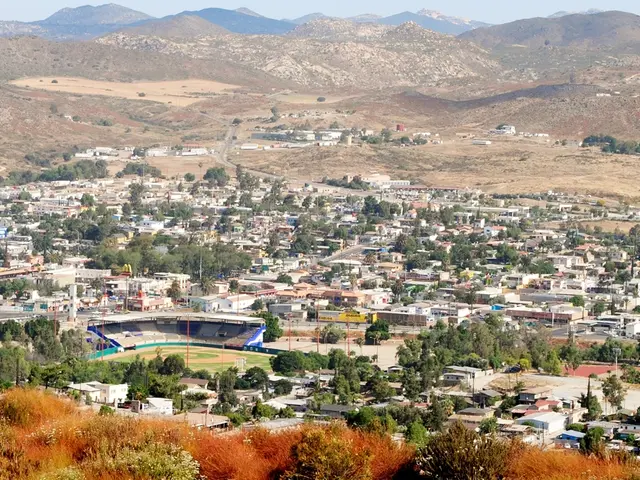Yearly financial loss due to natural disasters in Pakistan amounts to roughly 2% of the country's GDP, as per the United Nations.
The agriculture sector in Pakistan is facing repeated disruptions due to climate-related disasters and conflict, undermining food security and livelihoods in the country. According to the United Nations Office for the Coordination of Humanitarian Affairs (OCHA), these disruptions are deepening rural poverty, widening inequality, and slowing development, particularly in underserved areas of Pakistan.
The OCHA's latest assessment suggests that natural disasters cost Pakistan about 1-2% of its Gross Domestic Product (GDP) annually. Extreme floods, droughts, and other climate shocks severely damage agriculture, which contributes 19% to the economy and employs over a third of the workforce. The devastating 2022 floods alone caused over $30 billion in damages and economic losses exceeding $15 billion.
Climate-fueled glacier melt and intensified monsoon rains are responsible for the glacial lake outbursts and flash floods in mountainous regions of Pakistan, such as Gilgit-Baltistan and Swat Valley, causing devastating landslides and casualties. The World Weather Attribution study found that the floods in Pakistan during June 2022 were 10-15 percent more intense due to human-induced climate change.
Decades of economic and social pressure in Pakistan are linked to displacement from neighboring Afghanistan, ongoing militancy in border regions, and repeated climate-related disasters. Natural disasters and conflicts worsen rural poverty and inequality by destroying livelihoods and food security, disproportionately impacting marginalized groups such as women, who face heightened risks due to water insecurity and poor sanitation post-disasters.
Public services like education, healthcare, and infrastructure suffer as government resources are often reallocated to immediate disaster response, causing development delays and unmet social needs. Displacement from floods or conflicts strains shelter, health, water, and sanitation services, leading to overcrowding and increased public health risks, complicating long-term recovery.
The OCHA calls for disaster risk reduction, stronger early warning systems, and investment in community-level resilience to address the challenges posed by climate-related disasters in Pakistan. Addressing these challenges requires substantial investment in disaster risk reduction, climate resilience, and institutional capacity for climate finance and refugee management. Pakistan, as one of the world's largest refugee-hosting nations, faces additional pressures from conflict and militancy, further compounding economic stresses by diverting resources from development to crisis management.
In summary, the agriculture sector in Pakistan faces severe disruptions due to climate-related disasters and conflict, threatening food security and rural livelihoods. Simultaneously, the compounded pressures of refugee hosting and recurrent crises overwhelm public services, delaying social development and exacerbating inequalities, especially in rural and vulnerable communities. It is crucial to invest in disaster risk reduction, climate resilience, and institutional capacity to mitigate these challenges and ensure a sustainable future for Pakistan.
[1] UN OCHA, Pakistan Humanitarian Response Plan 2023, link [2] The World Bank, Pakistan: Climate Change and Agriculture, link [3] Reuters, Pakistan floods: Damage costs $30 billion, exceeds $15 billion in losses, link [4] The Guardian, Pakistan floods: 'We are dying', as death toll passes 1,739, link [5] The New Humanitarian, Pakistan floods: Women's rights and water security, link
- The world grapples with the news of Pakistan's agricultural sector being repeatedly disrupted by climate-related disasters and conflicts, posing threats to food security and rural livelihoods.
- Articles on the economic impact of these disruptions show that natural disasters cost Pakistan around 1-2% of its Gross Domestic Product (GDP) annually.
- Reports on climate science reveal that climate-fueled events, such as glacier melt and intensified monsoon rains, are largely responsible for the glacial lake outbursts and flash floods in Pakistan, causing substantial damage to agriculture and other sectors.
- Experts in cultural anthropology highlight the impact of these disruptions, stating that they deepen rural poverty, widen inequality, and slow development, particularly in underserved areas of the country.
- Resource allocation in Pakistan's industry and finance sectors may need to prioritize investments in health, education, and infrastructure to address the unmet social needs caused by the diversion of resources to immediate disaster response.
- Discussions on environmental science and climate resilience point out the importance of disaster risk reduction, stronger early warning systems, and investment in community-level resilience to address the challenges posed by climate-related disasters in Pakistan.
- Analysis of real-estate trends in Pakistan reveals that displacement from floods or conflicts can strain shelter services, leading to overcrowding and increased public health risks, complicating long-term recovery.
- To achieve climate resilience and sustainable development in Pakistan, it's essential to invest in institutional capacity for climate finance, disaster risk reduction, and refugee management, as the country faces additional pressures from conflict and militancy, further compounding economic stresses.




